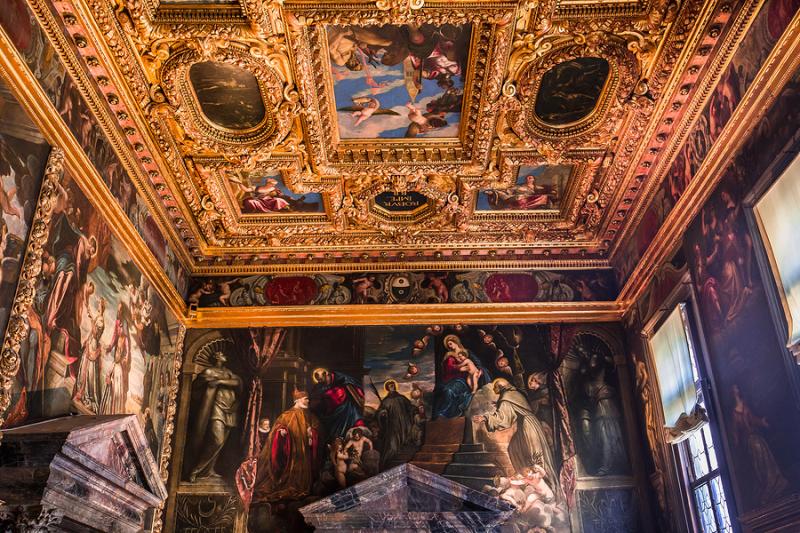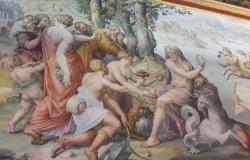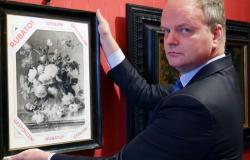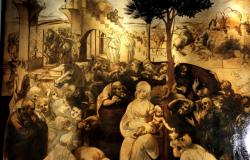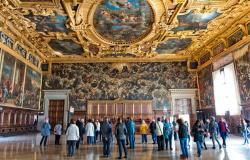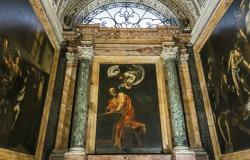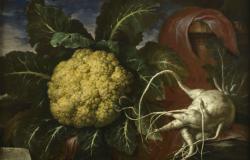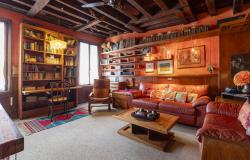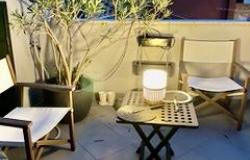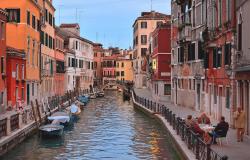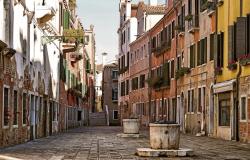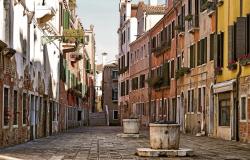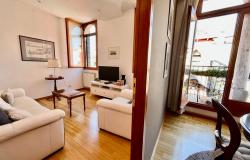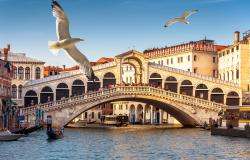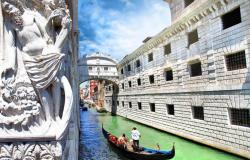Tintoretto was one of the leading painters in Venice between the 15th and 16th centuries – he spent almost his entire life in Venice, where he was born in 1518 or 1519. His family name was Robusti; he took the name Tintoretto from his father's profession of dyer (tintore in Italian). He was also nicknamed ‘Il Furioso,’ (the furious) for his energy and determination.
Influenced by Titian and Michelangelo (“he wanted to combine Titian's use of color with the energized forms of Michelangelo,” writes London’s National Gallery, which houses seven paintings by Tintoretto), Tintoretto became the most influential Venetian painter after Titian’s death, along with Veronese; he was in charge of a large workshop, designed and worked on a number of commissions for churches, the Doge's Palace, and the Scuola di San Rocco; many of his paintings are still in their original location, so you get to see them in the original place for which they were conceived.
Most of Tintoretto’s paintings are "large-scale narratives on canvas, animated by dramatic lighting and gestures." Described as a Mannerist, “his striving for effect is less in the cause of stylishness and more for the sake of narrative drama.” (National Gallery).
The 500th anniversary of Tintoretto’s birth was celebrated between the end of last year and the beginning of this with special exhibits and here’s an itinerary in the footsteps of the Venetian artist.

[Self-portrait.]
Start at Scuola Grande di San Rocco on Campo San Polo, considered the peak of Tintoretto’s art.
Located less than ten minutes from the train station, the Scuola di San Rocco is described by some as the ‘Sistine Chapel of Venice,’ for the number of characters, colors, figures, shapes and stories from the Old and New Testament depicted by Tintoretto on the walls and ceilings of the rooms of this building, which was originally established as a confraternity in 1478 and named after San Rocco, a venerated saint regarded as a protector against plague and illnesses.
Tintoretto worked on the decoration of the rooms of the Scuola for 24 years, from 1564 to 1588.He painted a breathtaking Crucifixion and other episodes in the Passion of Christ; he was then commissioned to decorate the ceiling of the large Sala Capitolare with episodes from the life of Moses. He proposed that he himself complete the decoration of the Scuola, promising to deliver three paintings a year for the rest of his life. Thus the Sala Capitolare was completed with episodes from the life of Christ, and the Sala Terrena with stories from the life of Mary, and events from the New Testament. All the subjects were interpreted with enormous compositional freedom and in an unconventional, dynamic and innovative way, writes MUVE, the association of civic museums of Venice.

[Crucifixion by Tintoretto in the Scuola Grande di San Rocco.]
After the Scuola Grande di San Rocco, head to the Church of Madonna dell’Orto in Cannaregio; Tintoretto, who lived nearby, worked on ten paintings for the church, his favorite. He was buried in this church after he died in 1594. His wife, son and daughter are also buried here.
Tintoretto worked on the refurbishment of the church. He decorated the organ with the “Presentation of the Virgin Mary in the Temple” (1556), which depicts the Virgin and child before the high priest Zaccaria, solemnly awaiting at the top of the stairs leading up to the Temple. The painting is a good example of Tintoretto’s powerful use of light, which, in this case, illuminates only half the composition, along a diagonal line.

[The Church of Madonna dell'Orto in Venice's Cannaregio.]
Tintoretto also decorated the Cappella Contarini with “The Miracle of St. Agnes”; in the choir, he painted gigantic canvases of “Moses Receiving the Tables of the Law” on the left interior wall, and the “Last Judgment” (1559-1560) on the right interior wall.
Near the church, in Fondamenta dei Mori, you can see the building where Tintoretto lived, marked by a plaque.
After lunch, go to the Gallerie dell’Accademia to see some of Tintoretto’s early paintings, such as “The Miracle of the Slave” (1548), which Tintoretto painted when he was 29; it’s the painting that put him on the art scene in Venice. It was originally painted for the Scuola Grande di San Marco, a confraternity in Venice, and portrays an episode in the life of Saint Mark, patron saint of Venice. The scene depicts the saint intervening to rescue a slave about to be martyred. The painting shows Michelangelo’s influence on Tintoretto in the way the bodies are depicted; while the vivid and intense colors are typical of the Venetian School.

[Miracle of the slave.]
End your itinerary at the Doge’s Palace in St. Mark’s Square. Palazzo Ducale was the seat and symbol of the government of the Republic of Venice. Persistent as he was, Tintoretto obtained a commission to decorate, along with other artists, the palace’s halls, the most important and prestigious in the city. The works he and other artists created in the 1550s and 1560s were almost all destroyed in two fires in 1574 and in 1577. After the fires, Tintoretto participated actively with his workshop in the new decoration of the building.
Start from the Atrio quadrato (1562-1565), the first large room that is reached from the Scala d'Oro; its ceiling was saved from the fire. Continue into the Sala delle Quattro Porte, whose ceiling displays the only frescoes by the artist, although almost completely repainted, then go into the Sala dell'Anticollegio, where the four allegories of the virtues of the Venice Republic’s good government are exhibited.
Continue in the Sala del Collegio, where you can see four large devotional paintings of doges on the walls; two more are in the nearby Sala del Senato, where, on the ceiling, the “Triumph of Venice” is displayed, represented as queen of the seas (1581-84).
Going down to the first floor, the Sala del Maggior Consiglio, where Venetian nobles gathered to make important decisions, is dominated by “Il Paradiso,” a massive oil painting on canvas, which Tintoretto created with his son Domenico (1588-92). At 25 meters long, it is one of the world's largest paintings.

[The Higher Council Hall in the Doge's Palace with Paradise by Tintoretto.]
Sometimes criticized, but mostly praised for his boldness by his contemporaries and in the years after his death, Tintoretto is a quintessential Venetian artist, whose numerous works contributed to creating the face of Venice.
This itinerary is far from exhaustive. There are 21 churches housing works by Tintoretto in Venice. We encourage you to go off the beaten path and explore beyond the usual top sights; this will also help decongest human traffic in the most touristy areas.
